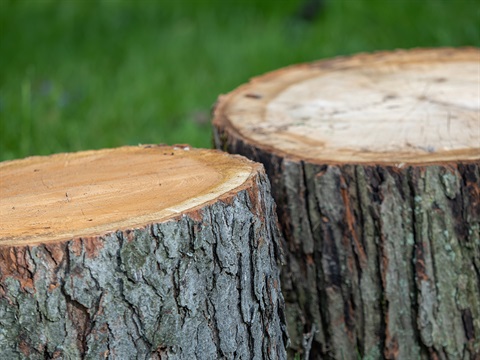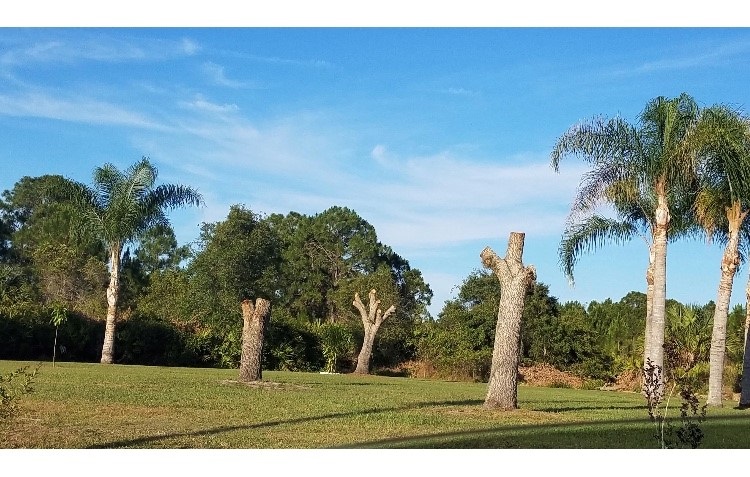Tree Removal & Arborist Services

In October 2024, North Port adopted a new Unified Land Development Code (ULDC), marking a significant milestone in the City’s ongoing efforts to streamline and modernize its land development regulations. This comprehensive update was adopted following extensive public input and careful consideration by the City Commission and Planning & Zoning Advisory Board.
A key component of the new ULDC is the updated tree protection regulations. These regulations aim to maintain a healthy urban forest while providing flexibility to property owners. Key elements include:
Tree Removal Authorization: Required for anyone wanting to remove, relocate, or cause irreparable injury to a tree. Exceptions apply for certain conditions, such as trees posing a danger to persons or property, or specific types of trees like exotic invasive species
Heritage Trees: Special protections are in place for heritage trees, which are native species with a diameter at breast height (DBH) of 24 inches or greater
Mitigation Requirements: Property owners must submit a mitigation form and tree survey for activities involving trees eligible for conservation or mitigation on undeveloped lots
Protected Species: The regulations include specific protections for various tree species, including mangroves and certain types of oaks
These updated regulations reflect North Port's commitment to safeguarding its natural resources while accommodating growth and development.
Tree Brochure(PDF, 10MB)
Frequently Asked Questions
Do I need authorization to remove a tree?
Yes, authorization is REQUIRED to remove, relocate, or cause irreparable injury to a tree, or to initiate development when a tree exists on a property, unless the tree falls under one of the following categories:
Prohibited Species: Any tree listed in Chapter 4, Article III, Section 4.3.5 of the ULDC, or any tree species on the most recent Florida Exotic Pest Plant Council Category I list of invasive species.
Dead Trees: Dead trees on vacant property, as verified by the ULDC Administrator or a certified International Society of Arboriculture (ISA) arborist, with the approval of the property owner.
Imminent Danger: Trees on private or public property that pose an imminent danger to the public, as determined by the ULDC Administrator in accordance with tree risk assessment guidelines defined by the ISA.
Nursery or Tree Farm: Trees planted on the premises of a plant nursery or tree farm that have been grown expressly for the purpose of selling.
How do I apply for tree removal authorization?
Tree removal authorization can be found under the “Certificate of Zoning Compliance” application. To apply for authorization visit the City of North Port’s online permitting page Accela and follow these steps:
Create an Account: If you don't already have an account, you'll need to register on the Accela Citizen Access portal.
Log In: Sign in to your account on the Accela Citizen Access portal.
Navigate to the Planning Tab: Once logged in, go to the "Planning" tab.
Select Minor Applications: Under the Planning tab, find and select "Minor Applications."
Complete the Application: Fill out the required information for the Certificate of Zoning Compliance application.
Submit Electronically: Submit your completed application electronically through the portal. For additional guidance, you can visit the City of North Port's Applications and Forms page which includes tutorials, video instructions, and FAQs.
Is a tree survey required?
Yes, a tree location survey is mandatory for all tree removal authorization applications. The survey must detail the species, location, and Diameter at Breast Height (DBH) of each tree proposed for removal or protection. For commercial projects, the survey must be signed and sealed by a licensed professional.
How do I measure the DBH (Diameter at Breast Height) of a tree?
To measure the Diameter at Breast Height (DBH) of a tree, follow these steps:
Identify the Correct Height: Measure 4.5 feet (1.37 meters) above the ground level. This is the standard height for measuring DBH.
Wrap a Measuring Tape Around the Tree: Use a flexible measuring tape to wrap around the trunk of the tree at the 4.5-foot mark. Ensure the tape is level and perpendicular to the trunk.
Read the Circumference: Note the circumference measurement in inches or centimeters.
Calculate the Diameter: If your measuring tape provides the circumference, divide this number by π (approximately 3.14) to get the diameter. For example, if the circumference is 31.4 inches, the diameter is 31.4 / 3.14 = 10 inches. https://www.youtube.com/watch?v=4Qss7OcjliI
This video demonstrates how to measure DBH.
What does the City do with my Tree Removal application and fee?
Upon receiving your Tree Removal application and fee, the City of North Port will:
1. Review the Application: A staff member will review your application to ensure all required information is provided and that it complies with the city's regulations.
2. Site Visit: A site visit will be conducted by a city staff member to inspect the tree(s) and the surrounding circumstances.
3. Decision: Based on the review and site visit, the City will decide whether to approve the application, approve it with stipulations, or deny it.
4. Final Inspection: After the tree removal work is completed, you must schedule a final inspection. A city staff member will conduct this inspection to ensure compliance with the authorization conditions.
5. Record Keeping: The City will keep records of your application, fee, and all inspections conducted.
All mitigation fees go towards the City’s Environmental Protection fund which is used towards Acquisition and ongoing maintenance of environmentally sensitive land; Acquisition of land for sustainability projects; Planting trees in public places and maintaining trees to protect health and safety on public lands in the City and Tree education, planting, and conservation programs.
How long does the application review process take?
The review process for tree removal authorization (Certificate of Zoning Compliance) in the City of North Port typically takes 10 business days from the date the application is submitted. This timeline includes the initial review by city staff, any necessary site visits, and the final decision.
What if the tree is on the property line?
If a tree is located on a property line, it is considered a shared responsibility between the property owners. Both parties must agree on any actions taken regarding the tree, such as removal or
trimming. It is recommended to have a written agreement outlining the responsibilities and decisions made by both property owners. Additionally, consulting with a certified arborist or the City of North Port's Natural Resources Division can provide guidance and ensure compliance with local regulations.
Still Have Questions?
The City of North Port is committed to the preservation of trees throughout the community and to educating residents about the benefits of trees. If you have any questions about the information in this brochure, please contact us.
Email: treeremoval@northportfl.gov
Natural Resources Manager: 941-429-7033
City-Owned Trees, Public Works Department: 941-240-8050
Planning Division: 941-429-7156
Stop Tree Topping

Topping is a practice that removes large amounts of leaves and branches from a tree's crown, reducing the tree's size. Topping involves indiscriminate (internodal) cuts without regard to tree health or structural integrity. Topping, also known as heading, stubbing, dehorning, tipping and rounding over, is no longer an acceptable pruning practice.
Topping removes large amounts of energy-converting foliage from the tree. This forces the tree to tap energy reserves to replace lost foliage, resulting in a weakened tree that is more susceptible to attack by pests and disease.
Trees will send out or “flush” large amounts of foliage to replace the leaves removed. New growth is dense and may appear to be fuller. Unfortunately, new branches are poorly attached and break easily increasing storm damage and personal liability, and topped branches are open for attack by pests and decay.
Just because your neighbor does it, doesn't mean it's okay
Some homeowners and tree care practitioners top trees whenever the trees reach an undesirable height. For some, they believe they are permanently reducing the height of the tree and reducing the storm hazard of falling branches, when in fact, topping has the opposite effect. People also top trees when they interfere with infrastructure such as utility wires, buildings, or views.
A topped tree requires more maintenance due to increased pruning cycles. Ultimately, the tree will die prematurely, reducing property values, and will need to be removed and replaced.
What are some alternatives to topping?
The canopy of a tree may be thinned with proper pruning to allow more sunlight through, while not severely damaging the tree. Carefully select the appropriate species before you plant a tree.
- Bear in mind the mature size of the tree and do not plant trees that will cause future conflicts with infrastructure, utilities, structures or views
- Contact an ISA Certified Arborist to properly prune your trees. Proper pruning can remove excessive growth without the problems topping creates.
- Enhance views by “windowing” or “crown raising.” “Windowing” is defined as removing several branches symmetrically within an area of the tree. By carefully choosing which branches to cut, and making proper pruning cuts, you can leave a window in a tree that provides a fully framed view and also maintain the health of the tree. “Crown raising,” or “skirting,” is the removal of lower branches to open up a view.
- To maintain a healthy tree, never remove more than 25 percent of the canopy of a tree at one time.
- Have an ISA Certified Arborist remove dead, dying, diseased, crowded, weakly-attached, or low-vigor branches through “crown cleaning.”